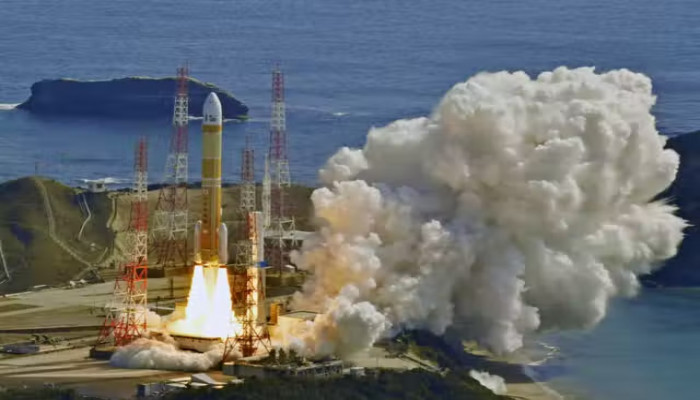Japan forced to destroy flagship H3 rocket in failed launch
- In Reports
- 10:05 PM, Mar 07, 2023
- Myind Staff
Japan’s space agency was forced to destroy a new H3 rocket moments after it launched on Tuesday, after the ignition for its second stage failed.
The H3 lifted off from the Tanegashima Space Center in southwestern Japan at 10:37 a.m. Tuesday on what was to be its maiden flight. It was scheduled to place an Earth observation satellite into orbit about 17 minutes later at an altitude of about 675 kilometers.
According to the Japan Aerospace Exploration Agency, or JAXA, about eight minutes after lift-off it was announced that ignition of the second-stage engine had not been confirmed.
The projectile followed its planned trajectory and the second stage separated as planned before the ignition failed, the Japan Aerospace Exploration Agency (JAXA) said.
Observers say it is a significant setback for Japan's Aerospace Exploration Agency.
Japan’s Science and Technology Minister Keiko Nagaoka said in a statement that the government had established a task force to investigate the “very regrettable” failure.
The H3 rocket is the first medium-lift rocket designed by Japan in three decades.
The last failed launch took place in October and involved the Epsilon-6 rocket.
The H3 is a successor to the H2A. The new flagship rocket is Japan's largest with a maximum height of 63 meters.
It is the first large rocket that Japan has developed in about 30 years. The aim was to increase payload capacity to 1.3 times that of the H2A, while cutting the current launch cost by roughly half.
Co-developers JAXA and Mitsubishi Heavy Industries have spent more than 200 billion yen, or about 1.5 billion dollars, since they launched the project nine years ago.
The rocket’s failure dealt a blow to Japan’s efforts to cut the cost of accessing space and compete against Elon Musk’s SpaceX.
“This will have a serious impact on Japan’s future space policy, space business and technological competitiveness,” said Hirotaka Watanabe, a professor at Osaka University with expertise in space policy.
“The H3 is extremely important to ensure our access to space and to ensure we are competitive,” JAXA President Hiroshi Yamakawa told reporters.
The H3 was carrying the ALOS-3, a disaster management land observation satellite. The satellite was also equipped with an experimental infrared sensor designed to detect North Korean ballistic missile launches.
Image source: Reuters







Comments